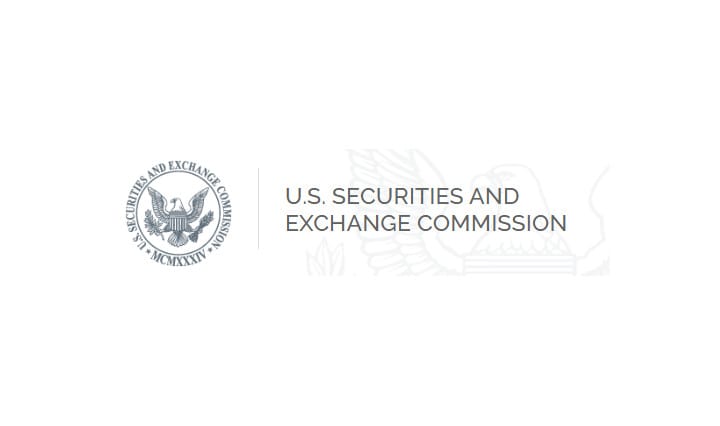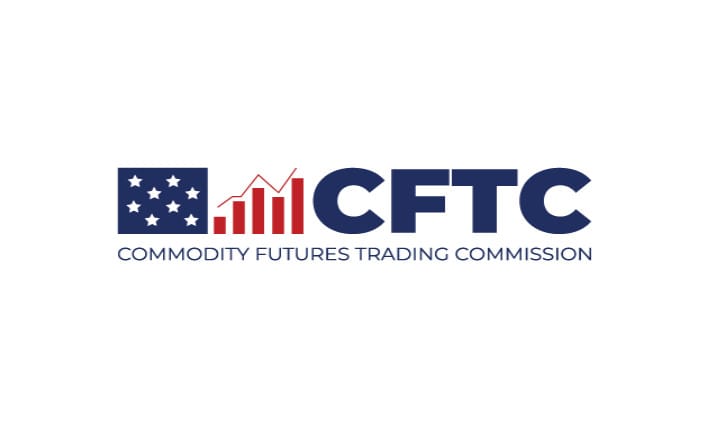Fitch Downgrades the United States' Long-Term Ratings to 'AA+' from 'AAA'. "A mild recession is anticipated in late 2023 and early 2024."

Yellen in response: “I strongly disagree with Fitch Ratings’ decision. The change by Fitch Ratings announced today is arbitrary and based on outdated data."
https://home.treasury.gov/news/press-releases/jy1665
Fitch Ratings has downgraded the United States of America's Long-Term Foreign-Currency Issuer Default Rating (IDR) to 'AA+' from 'AAA'. The Rating Watch Negative was removed and a Stable Outlook assigned. The Country Ceiling has been affirmed at 'AAA'.
A full list of rating actions is at the end of this rating action commentary.
KEY RATING DRIVERS
Ratings Downgrade: The rating downgrade of the United States reflects the expected fiscal deterioration over the next three years, a high and growing general government debt burden, and the erosion of governance relative to 'AA' and 'AAA' rated peers over the last two decades that has manifested in repeated debt limit standoffs and last-minute resolutions.
Erosion of Governance: In Fitch's view, there has been a steady deterioration in standards of governance over the last 20 years, including on fiscal and debt matters, notwithstanding the June bipartisan agreement to suspend the debt limit until January 2025. The repeated debt-limit political standoffs and last-minute resolutions have eroded confidence in fiscal management. In addition, the government lacks a medium-term fiscal framework, unlike most peers, and has a complex budgeting process. These factors, along with several economic shocks as well as tax cuts and new spending initiatives, have contributed to successive debt increases over the last decade. Additionally, there has been only limited progress in tackling medium-term challenges related to rising social security and Medicare costs due to an aging population.
Rising General Government Deficits: We expect the general government (GG) deficit to rise to 6.3% of GDP in 2023, from 3.7% in 2022, reflecting cyclically weaker federal revenues, new spending initiatives and a higher interest burden. Additionally, state and local governments are expected to run an overall deficit of 0.6% of GDP this year after running a small surplus of 0.2% of GDP in 2022. Cuts to non-defense discretionary spending (15% of total federal spending) as agreed in the Fiscal Responsibility Act offer only a modest improvement to the medium-term fiscal outlook, with cumulative savings of USD1.5 trillion (3.9% of GDP) by 2033 according to the Congressional Budget Office. The near-term impact of the Act is estimated at USD70 billion (0.3% of GDP) in 2024 and USD112 billion (0.4% of GDP) in 2025. Fitch does not expect any further substantive fiscal consolidation measures ahead of the November 2024 elections.
Fitch forecasts a GG deficit of 6.6% of GDP in 2024 and a further widening to 6.9% of GDP in 2025. The larger deficits will be driven by weak 2024 GDP growth, a higher interest burden and wider state and local government deficits of 1.2% of GDP in 2024-2025 (in line with the historical 20-year average). The interest-to-revenue ratio is expected to reach 10% by 2025 (compared to 2.8% for the 'AA' median and 1% for the 'AAA' median) due to the higher debt level as well as sustained higher interest rates compared with pre-pandemic levels.
General Government Debt to Rise: Lower deficits and high nominal GDP growth reduced the debt-to-GDP ratio over the last two years from the pandemic high of 122.3% in 2020; however, at 112.9% this year it is still well above the pre-pandemic 2019 level of 100.1%. The GG debt-to-GDP ratio is projected to rise over the forecast period, reaching 118.4% by 2025. The debt ratio is over two-and-a-half times higher than the 'AAA' median of 39.3% of GDP and 'AA' median of 44.7% of GDP. Fitch's longer-term projections forecast additional debt/GDP rises, increasing the vulnerability of the U.S. fiscal position to future economic shocks.
Medium-term Fiscal Challenges Unaddressed: Over the next decade, higher interest rates and the rising debt stock will increase the interest service burden, while an aging population and rising healthcare costs will raise spending on the elderly absent fiscal policy reforms. The CBO projects that interest costs will double by 2033 to 3.6% of GDP. The CBO also estimates a rise in mandatory spending on Medicare and social security by 1.5% of GDP over the same period. The CBO projects that the Social Security fund will be depleted by 2033 and the Hospital Insurance Trust Fund (used to pay for benefits under Medicare Part A) will be depleted by 2035 under current laws, posing additional challenges for the fiscal trajectory unless timely corrective measures are implemented. Additionally, the 2017 tax cuts are set to expire in 2025, but there is likely to be political pressure to make these permanent as has been the case in the past, resulting in higher deficit projections.
Exceptional Strengths Support Ratings: Several structural strengths underpin the United States' ratings. These include its large, advanced, well-diversified and high-income economy, supported by a dynamic business environment. Critically, the U.S. dollar is the world's preeminent reserve currency, which gives the government extraordinary financing flexibility.
Economy to Slip into Recession: Tighter credit conditions, weakening business investment, and a slowdown in consumption will push the U.S. economy into a mild recession in 4Q23 and 1Q24, according to Fitch projections. The agency sees U.S. annual real GDP growth slowing to 1.2% this year from 2.1% in 2022 and overall growth of just 0.5% in 2024. Job vacancies remain higher and the labor participation rate is still lower (by 1 pp) than pre-pandemic levels, which could negatively affect medium-term potential growth.
Fed Tightening: The Fed raised interest rates by 25bp in March, May and July 2023. Fitch expects one further hike to 5.5% to 5.75% by September. The resilience of the economy and the labor market are complicating the Fed's goal of bringing inflation towards its 2% target. While headline inflation fell to 3% in June, core PCE inflation, the Fed's key price index, remained stubbornly high at 4.1% yoy. This will likely preclude cuts in the Federal Funds Rate until March 2024. Additionally, the Fed is continuing to reduce its holdings of mortgage backed-securities and U.S. Treasuries, which is further tightening financial conditions. Since January, these assets on the Fed balance sheet have fallen by over USD500 billion as of end-July 2023.
ESG - Governance: The U.S. has an ESG Relevance Score (RS) of '5' for Political Stability and Rights and '5[+]' for the Rule of Law, Institutional and Regulatory Quality and Control of Corruption. Theses scores reflect the high weight that the World Bank Governance Indicators (WBGI) have in Fitch's proprietary Sovereign Rating Model. The U.S. has a high WBGI ranking at 79, reflecting its well-established rights for participation in the political process, strong institutional capacity, effective rule of law and a low level of corruption.
RATING SENSITIVITIES
Factors that Could, Individually or Collectively, Lead to Negative Rating Action/Downgrade
--Public Finances: A marked increase in general government debt, for example due to a failure to address medium-term public spending and revenue challenges;
--Macroeconomic policy, performance and prospects: A decline in the coherence and credibility of policymaking that undermines the reserve currency status of the U.S. dollar, thus diminishing the government's financing flexibility.
Factors that Could, Individually or Collectively, Lead to Positive Rating Action/Upgrade
--Public Finances: Implementation of a fiscal adjustment to address rising mandatory spending or to fund such spending with additional revenues, resulting in a medium-term decline in the general government debt-to-GDP ratio;
--Structural: A sustained reversal of the trend deterioration in governance.
SOVEREIGN RATING MODEL (SRM) AND QUALITATIVE OVERLAY (QO)
Fitch's proprietary SRM assigns the United States a score equivalent to a rating of 'AA+' on the Long-Term Foreign-Currency IDR scale.
Fitch's sovereign rating committee did not adjust the output from the SRM to arrive at the final Long-Term Foreign-Currency IDR.
Macro: Fitch removed the + 1 notch to reflect the deterioration of the GDP volatility variable and sharp spike in inflation following the pandemic and its aftermath. The economic volatility and inflation impacts on the SRM have begun to revert towards historical levels and no longer warrant a positive QO notch.
Fitch's SRM is the agency's proprietary multiple regression rating model that employs 18 variables based on three-year centered averages, including one year of forecasts, to produce a score equivalent to a Long-Term Foreign-Currency IDR. Fitch's QO is a forward-looking qualitative framework designed to allow for adjustment to the SRM output to assign the final rating, reflecting factors within its criteria that are not fully quantifiable and/or not fully reflected in the SRM.
COUNTRY CEILING
The Country Ceiling for the United States is 'AAA', 1 notch above the Long-Term Foreign-Currency IDR and at the upper limit of the rating scale. Fitch views as de minimis the risk of exchange and capital controls being imposed that would prevent or significantly impede the private sector from converting local currency into foreign currency and transferring the proceeds to non-resident creditors to service debt payments. Fitch's Country Ceiling Model produced a starting point uplift of +1 notches above the IDR and Fitch's rating committee did not apply a qualitative adjustment to the model result.
BEST/WORST CASE RATING SCENARIO
International scale credit ratings of Sovereigns, Public Finance and Infrastructure issuers have a best-case rating upgrade scenario (defined as the 99th percentile of rating transitions, measured in a positive direction) of three notches over a three-year rating horizon; and a worst-case rating downgrade scenario (defined as the 99th percentile of rating transitions, measured in a negative direction) of three notches over three years. The complete span of best- and worst-case scenario credit ratings for all rating categories ranges from 'AAA' to 'D'. Best- and worst-case scenario credit ratings are based on historical performance. For more information about the methodology used to determine sector-specific best- and worst-case scenario credit ratings, visit https://www.fitchratings.com/site/re/10111579.
REFERENCES FOR SUBSTANTIALLY MATERIAL SOURCE CITED AS KEY DRIVER OF RATING
The principal sources of information used in the analysis are described in the Applicable Criteria.
ESG CONSIDERATIONS
The U.S. has an ESG Relevance Score of '5' for Political Stability and Rights as World Bank Governance Indicators have the highest weight in Fitch's SRM and are therefore highly relevant to the rating and a key rating driver with a high weight. As the U.S. has a percentile rank below 50 for the respective Governance Indicator, this has a negative impact on the credit profile.
The U.S. has an ESG Relevance Score of '5[+]' for Rule of Law, Institutional & Regulatory Quality and Control of Corruption as World Bank Governance Indicators have the highest weight in Fitch's SRM and are therefore highly relevant to the rating and are a key rating driver with a high weight. As the U.S. has a percentile rank above 50 for the respective Governance Indicators, this has a positive impact on the credit profile.
The U.S. has an ESG Relevance Score of '4[+]'for Human Rights and Political Freedoms as the Voice and Accountability pillar of the World Bank Governance Indicators is relevant to the rating and a rating driver. As the U.S. has a percentile rank above 50 for the respective Governance Indicator, this has a positive impact on the credit profile.
The U.S. has an ESG Relevance Score of '4[+]' for Creditor Rights as willingness to service and repay debt is relevant to the rating and is a rating driver for the U.S., as for all sovereigns. As the U.S. has track record of 20+ years without a restructuring of public debt and captured in our SRM variable, this has a positive impact on the credit profile.
Except for the matters discussed above, the highest level of ESG credit relevance, if present, is a score of '3'. This means ESG issues are credit-neutral or have only a minimal credit impact on the entity, either due to their nature or to the way in which they are being managed by the entity. For more information on Fitch's ESG Relevance Scores, visitwww.fitchratings.com/esg.
Wut mean?:
- Fitch Ratings' Downgrade of the United States' Credit Rating
Reasons for Downgrade:
- Governance Erosion: Over the past two decades, there's been a decline in governance standards, particularly around fiscal and debt matters. Examples include the repeated last-minute resolutions to the debt limit.
- Increasing Debt: U.S. government debt is growing, due to various factors such as the absence of a medium-term fiscal framework, economic shocks, and recent spending initiatives.
- Rising Deficits: The general government deficit is projected to increase from 3.7% of GDP in 2022 to 6.3% in 2023 and further in subsequent years.
- Debt to GDP Ratio: The ratio declined post-pandemic but remains higher than pre-pandemic levels. By 2025, it's forecasted to reach 118.4%.
- Medium-term Fiscal Concerns: There's little progress in handling challenges like rising costs for social security and Medicare, which are exacerbated by an aging population.
Economic Forecast:
- A mild recession is anticipated in late 2023 and early 2024.
- Real GDP growth is slowing, and 2024 growth is expected to be just 0.5%.
- The Fed has raised interest rates thrice in 2023 and may raise it again by September.
- Strengths of the U.S.: The U.S. has a well-diversified, high-income economy and the U.S. dollar remains the dominant global reserve currency, granting the country considerable financing flexibility.
Rating Sensitivities:
- For a Further Downgrade: A significant increase in government debt or a decline in policy coherence could trigger another downgrade.
- For an Upgrade: If there's a fiscal strategy to tackle rising spending or if governance improves, the rating could be positively adjusted.
- ESG Considerations: The U.S. has high scores for political stability, rule of law, institutional quality, and corruption control, which impact its credit profile positively.
Statement by Secretary of the Treasury Janet L. Yellen:

Treasury securities remain the world’s preeminent safe and liquid asset, and that the American economy is fundamentally strong.
TLDRS:
- Fitch Downgrades the United States' Long-Term Ratings to 'AA+' from 'AAA'. "A mild recession is anticipated in late 2023 and early 2024."
Yellen in response: "“I strongly disagree with Fitch Ratings’ decision. The change by Fitch Ratings announced today is arbitrary and based on outdated data."
- "Treasury securities remain the world’s preeminent safe and liquid asset, and that the American economy is fundamentally strong."
- About half of deposits are uninsured, accounting for about $9 trillion of bank funding in the aggregate.
- If there is a widespread run by uninsured depositors, more than 1,600 banks could fail with aggregate assets of close to $5 trillion.



